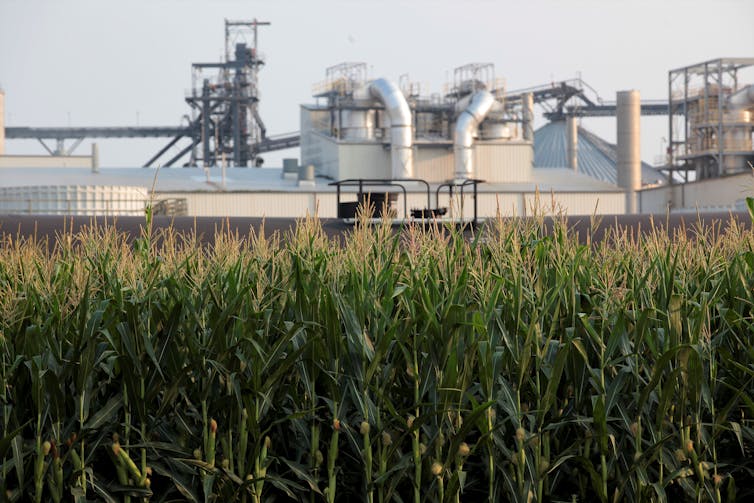Climate policy creates winners and losers, and governments need to choose the best models to weigh the outcomes
At COP26, governments will have to consider how climate policies help them achieve their emissions targets and affect economies.


As the global climate discussion builds strength at COP26, governments at all levels need to understand how climate and energy policies will impact their greenhouse gas emissions and economies. To do this, they rely on “energy-economy models,” computer simulations that analysts use to assess how energy is produced and used within the economy.
But not all of these models are the same. One model can produce very different results from another. Or similar results can be interpreted in different ways. This can make decision-making on climate policy challenging.
So how can governments match their climate policy questions to an appropriate model? As climate policy experts, my group and I conducted a recent study that helps answer this question. We identified the best practices that policy-makers should consider when evaluating climate policies to ensure that the best choices are made for the health of the planet and for their citizens.
Real-world decision-making
Some models lump similar technologies together, but models that separate them make it possible to include technology-specific data, such as a vehicle’s fuel economy, in the calculation. This can also help governments better assess the impacts of technology-specific policies, like Canada’s fuel economy regulations, on energy and greenhouse gas emissions.
The detailed level of technological representation also lets us project how the technology might change, or be replaced, over time. This is especially important for near-commercial technologies because their attributes aren’t usually captured well by historical data.
Models also make assumptions about how and why we invest in energy-related technologies. Many energy-economy models do not represent individual people and their actions, but include their aggregate behaviour. This usually works well, but there are two important, often overlooked, dynamics.
First, not everyone makes the same investment decision given the same circumstances. If governments don’t account for this dynamic, they may ignore alternative greenhouse gas abatement pathways and technologies. For instance, if a model tells us that everyone will soon be buying electric vehicles, governments might not incentivize electric vehicle sales, thinking that a big sales uptick will happen by itself.
Second, a wide variety of non-financial factors can influence investment decisions. For instance, some people are less likely to buy an electric vehicle because they see charging an electric vehicle as a nuisance, while others aren’t as concerned. Models that ignore non-financial factors and include only financial costs can produce results that don’t align with real-world decision-making, leading to ill-informed policy decisions.

This story is part of The Conversation’s coverage on COP26, the Glasgow climate conference, by experts from around the world.
Amid a rising tide of climate news and stories, The Conversation is here to clear the air and make sure you get information you can trust. More.
Understand connections
The multitude of COP26 climate pledges to phase out coal, slash methane emissions and halt deforestation will yield both economic benefits and costs, and it’s crucial that governments understand the nature and distribution of these impacts for different households and industries. These include changes to employment, economic growth, energy prices and economic activity levels.
An energy-economy model should be able to assess the macroeconomic effects of climate policies, that is, those policies that will have an impact on a broad portion of the population. This requires the model to know how different sectors of the economy are linked together.

For instance, if governments want to blend more ethanol into our gasoline to cut greenhouse gas emissions, they should understand where that ethanol will be produced and what impact the increase in ethanol production has on the price of raw materials. Models that can provide information on key economic indicators such as changes in production from difference sectors, trade dynamics and structural shifts (like fewer people working in the oil and gas industry) are particularly useful.
Read more: How Canada can leave 83 per cent of its oil in the ground and build strong new economies
Finally, energy-economy models should be able to accurately represent different types of policies, and do so in a way that captures unintended policy interactions. For instance, a model might be good at guiding decision-making about carbon pricing, but bad for planning renewable electricity generation. Most importantly, governments should understand that no one model will be the “best” for answering all their climate policy questions. Choosing the right model will depend on what policy question is being asked.
Global leaders should aim to build consensus on climate policy solutions at COP26. Prolonged disagreements, even among climate-concerned politicians, have helped the fossil fuel industry dangerously warm the planet over the past three decades. Finding consensus starts with climate-sincere leaders choosing the right models.
Aaron Hoyle, a former master’s student in resource and environmental management at Simon Fraser University, co-authored this article.![]()
Ekaterina Rhodes receives funding from Social Sciences and Humanities Research Council. She is also a President of the Canadian Society for Ecological Economics.
What's Your Reaction?






























































































